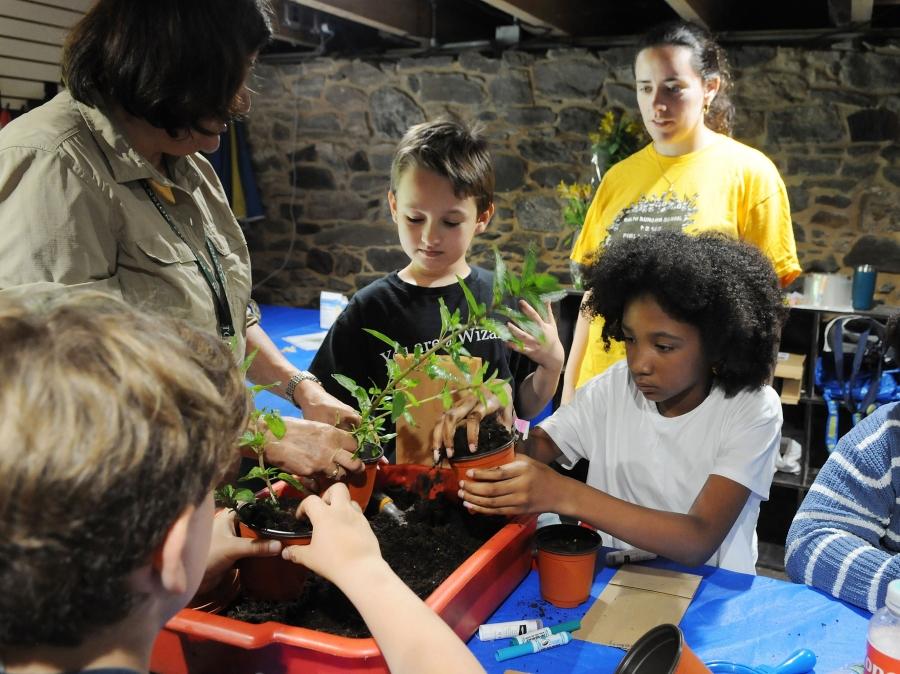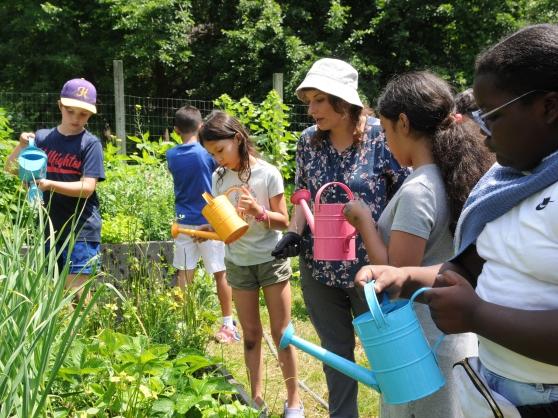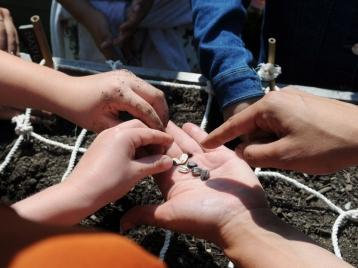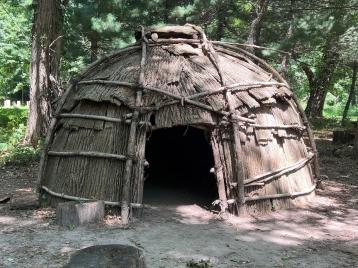Planting seeds of knowledge

Museum educator Maxine Siegel (left) helps students plant mint to take home as PS 125 teacher Melody Naccarato looks on.

Students water plants under the guidance of the mansion’s assistant gardener.
As a child growing up in the Hudson Valley, Melody Naccarato, now a teacher at PS 125 in West Harlem, went on memorable school trips north of the city to Franklin D. Roosevelt’s colonial revival-style home in Hyde Park and the beaux arts-style Mills Mansion at the Staatsburgh State Historic Site.
She sought something closer for her 4th-graders and decided on the Bartow-Pell Mansion Museum in the Bronx’s Pelham Bay Park — New York City’s largest park. The museum sits on 220 acres of the approximately 50,000 that physician Thomas Pell purchased from the Lenape people in 1654. Publisher Robert Bartow, a Pell descendent, and his wife, Maria Lorillard, bought the property in 1836, built the Greek Revival-style mansion and lived there until 1888.
“It’s one of the last historical mansions around here, so I thought that was really cool,” said Naccarato, an ELA and social studies teacher.
She and science and math teacher Pura Luna visited with students on June 4 for the museum’s “Growing from the Ground Up” program to learn about the food and plants that may have grown on the estate during the 1800s as well as the life cycle of plants and biodiversity.
The museum also offers four other educational programs: “Lenape of the Bronx,” which takes place inside a wigwam located on the estate and explores the lifestyle and culture of the Lenape people; “A World Away: Servants’ View of the Bartow Mansion,” which focuses on the lives of the 19th-century Irish immigrants who were employed as domestic workers, gardeners and coachmen; “Mansion Life,” which includes a tour of the mansion and carriage house; and “Home Sweet Habitat,” which takes students on a hike in the woods to learn about plants and animals native to the area.
After Naccarato’s and Luna’s students gathered inside the carriage house, museum educator Maxine Siegel went over the phases of the plant cycle and discussed which parts of plants we eat. The 4th-graders dissected and identified the parts of a yellow Peruvian lily. They cheered when Siegel announced everyone would take home a mint plant.
“I’m probably going to put it next to the window,” student Anaya said. “I can also ask my grandma. She owns a mint plant.”
In the nearby garden, which has the types of food and plants grown on the estate in the 1800s, students companionably dug, planted and watered the soil. They occasionally let out a scream or two when they discovered an earthworm, a spider, an inchworm or a bee.
“If you see a bee, take a step back and don’t flail your arms because that’s going to make them very nervous,” assistant gardener Vicky Namanworth counseled before reviewing the pollination process with the students.
During the visit, Siegel and Namanworth explained that the Lenape and other Native American peoples planted what is referred to as the “three sisters” — corn, squash and beans — in their gardens to achieve symbiosis. The corn grows tall, giving the thin, curly bean stems stable structures to wind around as they mature. Squash protects the soil and keeps it moist and shaded because it grows low to the ground. “The Lenape people, hundreds and hundreds of years ago, figured this out,” Siegel said.
Namanworth explained that sunflowers are often the fourth sister in a “three sisters” garden because they attract insect pollinators. Students took turns planting seeds for lush teddy-bear sunflowers.
The 4th-graders got to smell different herbs, such as oregano and lemon balm, and they learned that calendula is used in anti-inflammatory herbal salves, clothing dye and yellow rice. Suzanna, a student, collected one of all the leaves they were allowed to take and stored them in her pockets. “I want to make tea,” she said.
Naccarato said her school’s administration encourages field trips. This one got the children outside and exposed to the environment, and it connected with their classroom learning. Earlier in the school year during class, the 4th-graders built replicas of longhouses with gardens that included clay representations of people, corn, squash and beans.
Naccarato said she would consider booking two sessions — one inside and one outside, with lunch in between — for the next school trip to Bartow-Pell.
In addition to being connected to their curriculum on ecosystems, the trip engaged the children, Luna said. They love “getting their hands dirty,” she said.
The Bartow-Pell Mansion Museum uses touch-tours, open-ended inquiry challenges, craft projects and interactive games to reinforce school curriculum and help students build critical thinking and evidential reasoning skills. There are five programs offered year-round. All programs are 90 minutes and are limited to 30 students. The base cost is $245 per class with the option of a half-hour add-on module for $50 more. To schedule a class trip, contact Susan Chesloff at schesloff [at] bpmm [dot] org (schesloff[at]bpmm[dot]org) or call 718-885-1461.

